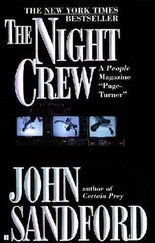Fang-Castro nodded. “I buy most of that: the aliens probably don’t want to kill us. You understand what our biggest problem could be…”
“The Chinese.”
“Yes. It seems to me that we’re getting in a bind here. They would have a problem with our getting exclusive use of an alien tech. That’s something we’ve got to work through.”
“Are you going to weaponize the Nixon to fight the Chinese?”
“I doubt it. We have to see what the big brains on Earth think. But if we did—and if the Chinese already have—I think what you’d have is mutual assured destruction. If we don’t arm ourselves and the Chinese attacked us, I’m pretty sure Santeros would destroy their ship in retaliation. And vice versa. There wouldn’t be a huge war, or anything, but nobody would be able to put anything out in space—or more to the point, get it back. At the same time, exclusive use is pretty tempting.”
“Lot of ugly possibilities growing out of those fears,” Clover said.
“Yes, there are.” Fang-Castro glanced at her view screen and said, “They’re cutting up the hulls. I’ve got to go check on things. Listen, John—we’ve got to talk more. Read some twentieth-century stuff on the way the Americans and Russians managed the Cold War. Tell me what you think about that—their management techniques.”
“I will do that,” Clover said. “I’ve got to tell you, though, you’ve got me a little puckered up here.”
“I’ve been puckered up ever since I found out the Chinese were going to Saturn.”
Trimming the living modules wasn’t technically difficult; it just had to be done carefully and in a coordinated fashion so it wouldn’t throw the station out of balance. Industrial lasers could cut through the frothy walls in minutes. After the cutters sliced off the excess thirty meters from each module, crews would build new proper front ends, reattach the front elevators, and remove the temporary supports.
Clover had just gone, with his cat, when the station computer pinged Fang-Castro to move to the command module. She relieved the officer on watch and checked the external monitors and status displays; the four industrial cutters were in position.
“Mr. Martinez, how’s everything out there?”
“We’re good. We’re about through the first one, the tugs are positioned to get it out of the way.”
In carefully coordinated action, the four laser operators had fired up their beams and begun simultaneously cutting through the inner and outer walls of the two living modules, just forward of the temporary bulkheads. Grooves had appeared in the four walls and deepened into narrow cuts; otherwise there was little to see besides a faint purplish glow.
The excimer laser cutters projected intense shortwave ultraviolet light, invisible to human eyes. The high-energy photons didn’t burn their way through materials; they directly broke apart molecular bonds. Foam and fabric simply disintegrated into vapor where the beam hit, cold-cutting that the laser crews controlled with surgical precision.
It took most of an hour to cut through the first two pairs of walls. The job could have been done in half the time, but Martinez was being careful. He periodically called for work stoppages while status readings were checked. Were the station’s stabilizing computers keeping everything in balance? Were the brackets doing their job of keeping the forward sections from breaking loose prematurely? Any stray debris flying around, something blown off by the lasers?
After January’s failed radiator test, Fang-Castro was being super-careful about creating space junk. That hadn’t just been embarrassing, it’d been expensive. Nobody had been prepared for such a spectacular failure, and the station personnel were only able to recover about three-quarters of the chaff created by the uncontrolled radiator ribbons.
Interops, the International Orbital Operating Commission, had levied a fine whose size was described as “astronomical” by almost every punster on the Internet. Space junk had made low Earth orbit space almost unusable by the mid-thirties, and it had taken a decade of concerted and costly international effort to clear out the big stuff. A lot of the small stuff was still circling the earth, and now the space nations were talking about who’d pay to clear that.
The cutting proceeded, carefully, until the forward thirty meters of modules were severed from the rear seventy. The cutters shut down the lasers, a final systems check came up green, and Martinez spoke an authorization into his workslate. The operations computer simultaneously released the locking clamps on the module sections and a millisecond later fired the engines on the pair of robotic tugs.
From the command module, Captain Fang-Castro watched as the now-superfluous forward sections were moved to a safe distance away from the station. Some of their materials would be recycled into the Nixon , but most of it was scrap, possibly recyclable to a new station. She checked the status reports: the station was stable and the temporary forward bulkheads on the truncated living modules were working perfectly. The whole operation had gone off with exemplary smoothness.
She realized she’d been tensely hunched over the console and consciously relaxed her shoulder blades. The rest of the reconstruction wouldn’t take more than the remainder of the day. Crews had pre-fabbed new front ends for the modules with all the fittings, docking collars, and brackets they needed to smoothly hook them up to the living modules and reattach the free-floating front elevator shafts to them and the new axle hubs.
“Mr. Martinez?”
“Yes, ma’am.”
“Outstanding work. Pass that along to everyone who had a hand in this. I just spoke to the President, and she is extremely impressed, and she is not an easily impressed woman,” Fang-Castro said.
“I will pass that along, ma’am. Thank you.”
She hadn’t spoken to Santeros in a week, at which time they’d agreed on two possible statements: congratulations for a job well done, and a second, “The responsibility for this problem is mine, not the men and women who did the work.”
“Mine,” as in Fang-Castro’s, not Santeros’s.
Fortunately, she thought, as she headed back to her room, the second statement wouldn’t be needed.
As yet, anyway.
Sandy and Fiorella had stayed up, when most of the crew had gone down, because they were documenting the reconstruction. Sandy had been outside, and had just gotten back, when Fiorella pinged him.
“We need to talk to you. Privately.”
“Uh, where are you?”
“My cabin.”
“I just got in, I’m in Engineering. I could stop by…”
“Please do. Soon.”
Was she now using the royal “we”? Sandy wondered, as he dropped down the shaft to the habitat. Or was there more than one person waiting for him? Whatever, Fiorella definitely sounded conspiratorial. Of course, she was of Italian heritage; the Medicis, and all that.
He got to her cabin, tapped the call bell, and the door popped open. “Come on in,” Fiorella said. John Clover was sitting in the single chair, and nodded. Fiorella sat at one end of her bunk and patted the other end for Sandy.
“So what’s up?” Clover asked.
Fiorella looked at Sandy. “Despite our personal differences, the people on this ship believe that you and I are destined to sleep together.”
“Fools,” Sandy said.
“I would agree,” Fiorella said.
“Although you are not totally unattractive,” Sandy allowed.
“I would have to say the same about you,” Fiorella said.
Clover said, “Excuse me. I don’t think I want to hear this conversation.”
Fiorella said, “Yes, you do. Wait until I finish.”
Читать дальше








